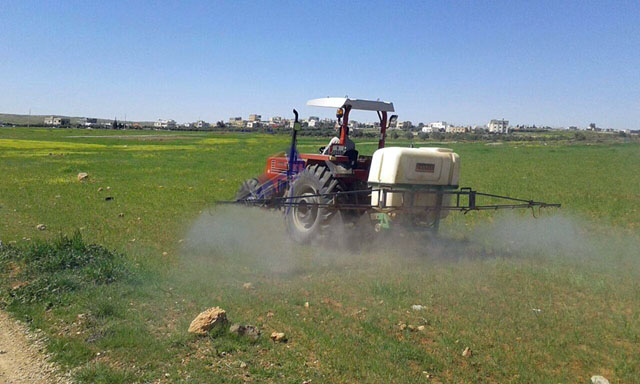AMMAN — A fifth of the land planted with cereals in Karak Governorate is infected with the cereal leaf miner, a worm that infests wheat and barley among other grains, officials said on Sunday.
Combating the pest, which starts infecting wheat and other cereals in February and feeds on crops until April, is very difficult and farmers will incur heavy losses if they do not follow the instructions to curb its spread, according to Mazen Dmour, the director of the Karak Agriculture Directorate.
“A total of 150,000 dunums are planted with cereals in Karak. So far, some 20,000-30,000 dunums are infected with the cereal leaf miner. The infected area might increase as the worm continues spreading until April,” Dmour told The Jordan Times.
Agriculture Ministry Spokesperson Nimer Haddadin said the ministry started spraying land planted with cereals in Karak, 140km south of Amman, with pesticides earlier this month to stop further infestation.
“Similar campaigns to combat the cereal leaf miner are taking place in different governorates in conjunction with campaigns to raise farmers’ awareness on ways to prevent and combat the infestation,” Haddadin told The Jordan Times.
The campaign to spray pesticides is taking place in three areas — Al Qaser, Al Mazar and Karak districts, according to Dmour, who noted that it is hard to combat the pest.
“Because it is very difficult and causes losses every year to farmers, they must follow the ministry’s instructions to prevent the worm from attacking their cereals,” Dmour underscored.
Such measures include crop rotation, under which farmers plant different crops on their land in a sequence, he explained, noting that a proper crop rotation is a means to control pests that become established in the soil over time.
In addition, farmers are advised to plough their land at a depth of 30-40 centimetres because the cereal leaf miner inhabits inner soil and deep ploughing allows the sun to reach the pest and kill it, Dmour said.
